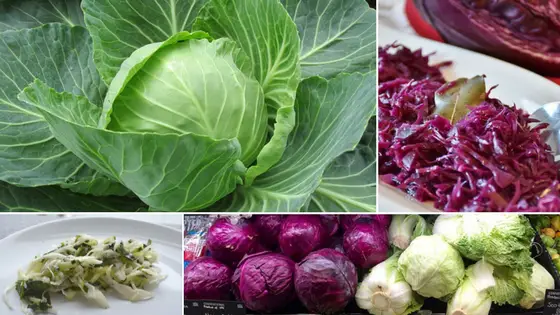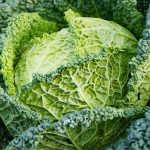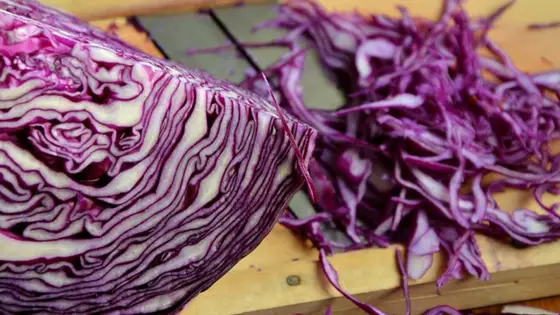 It doesn’t matter whether you want to cook the winter cabbage varieties like Savoy or the spring or summer ones, there are a few basics you can follow when cooking your cabbages that give you great results every time.
It doesn’t matter whether you want to cook the winter cabbage varieties like Savoy or the spring or summer ones, there are a few basics you can follow when cooking your cabbages that give you great results every time.
Fresh cabbages taste better than frozen ones and are so easy to cook, versatile and so readily available for the most part it is well worth using them.
There are several key things to think about when cooking cabbage, the type of cabbage, what you want it for, the time to cook and the colour and taste.
How To Cook a Fresh Cabbage to Perfection
I am a big cabbage fan, it is such a versatile vegetable, it is available all year naturally, very nutritional (if not overcooked) and it is quite economical to buy. I quite often grow it on my plot because you can get varieties just not available in the shops, but it doesn’t always do so well and the slugs love it.
What Colour Cabbage Should you Choose?
This really depends on your own personal tastes. The darker the cabbages the stronger the taste. Also, winter cabbages seem to taste stronger too. I like the firm round light green ones the best. It is worth trying out some different varieties to see what you prefer. Also, bear in mind that this page is for straightforward cabbage cooking. If you are making other things from it, it may be that you would use a different variety.
What is the Cooking Time for Cabbages
Cabbage has come a long way since the days where it came out an overcooked slushy mess. This is in part due to the length of time they are cooked for.
Note on cooking times for cabbage: For this post, I am giving general standard cooking times as I probably undercook my cabbage these days. If cooking something else I tend to just put it on the top in a steamer and barely steam it or just pop it on the top of what is being cooked. Super lazy I know, but I like simple and quick.
But that isn’t for everyone and everyone’s cookers are different. Also, all the cabbages are different as well and some are better suited to one way of cooking than another or just take longer to cook.
Try out the times that are used and work from there to how you like your cabbage done.
As a general guide, the white and green cabbages take approximately 3 to 5 minutes to cook. The red ones, however, take a bit longer and are better for cooking that bit slower.
Which is the Best Way to Cook It, Boiling or Steaming Your Cabbage? Is There Another Way?
Both boiling and steaming work perfectly well, however sometimes boiling can leave your cabbage limp and too wet. Steaming can as well but it is less likely.
If you prefer there are a lot of other things you can do with your cabbage as well depending on the variety. You can also eat it un-cooked, cook it in the microwave, slow cooker or simply saute it. You can also add flavours etc to it to make it more interesting etc.
Did we get any of that as children? Nope. It came boiled. That’s it, just boiled.

How to Boil a Cabbage
Why Not Boil Green or White Cabbage on the Hob for Quickness?
Boiling is still a popular way to cook your cabbage. It is quick and easy to do.
Instructions
-
Cut your cabbage into leaves and check them for dirt, debris, and slugs if you have bought organic or grown your own.
-
Wash your leaves thoroughly to remove any dirt etc.
-
Cut your leaves down into manageable sizes.
-
Place a saucepan of boiling water onto the hob.
-
Pop in your leaves.
-
Place the lid on the saucepan and simmer for 4-6 minutes approximately until the cabbage is tender but not too limp and soggy.
Garden to Kitchen Expert: How to cook vegetables, fruit, flowers, herbs and weeds from Amazon
How to Cook Red Cabbage Without It Losing Its Colour
I remember the first time I cooked red cabbage. I was so proud, I had just harvested some lovely red cabbage from my garden and envisioned sitting down to a brightly coloured dinner. I popped it into the saucepan to cook. Shortly after the water changed colour and my cabbage lost it’s red. I was gutted! Absolutely gutted. What was the point of red cabbage if it didn’t stay red?
None.
I was moaning about this to my sister who gave me the solution it was so simple. You simply add some vinegar while cooking. I read somewhere that other acidic foods like lemons may also work, however, I haven’t tried them.
How to Shred a Cabbage

If you prefer to shred your cabbage or need to shred it to make coleslaw there is a very detailed tutorial on how to shred cabbage here.
Once you have shredded your cabbage simply follow the cooking methods shown here.
Lightly Steam Cabbage Leaves
Steaming cabbage leaves in a steamer is quick and easy to do and at least for me reduces the sogginess and wet feel to them.
While shredding seems to be the way to go. I tend to just roughly chop up mine after removing the steams and cleaning them.
I have a three-tier steamer. I make sure I use the bottom tier for general cooking if I am going to steam my vegetables and the next tier for the vegetables.
Easy Steamed Cabbage

-
Clean off any dirt or debris and remove any damaged bits of your cabbage
-
Wash it thoroughly
-
Chop up the leaves into manageable sizes
-
Put boiling water into the bottom of your steamer
-
Pop the cabbage into the pan above and cover with a lid
-
Steam until they are soft about 4-8 minutes (length of time depends on the type of cabbage and how you decided to cut them)
Should You Use Bicarb When Cooking Cabbage?
While thinking about the differences in how my nan used to cook cabbage to how it is cooked these days I realised that one of the things she did differently was use bicarb, I was sure of it. Was this the reason for poor cabbage quality?
My research was surprising. It seems that bicarb was and still is in some quarters used to enhance the colour of the cabbage (and other greens). However, most people don’t use it these days as we do not cook it to death like they did in the past so the cabbages remain green anyway. Also, it reduces nutrients as well.
Did your nan or mum use bicarb in their vegetable cooking and cook it forever?

